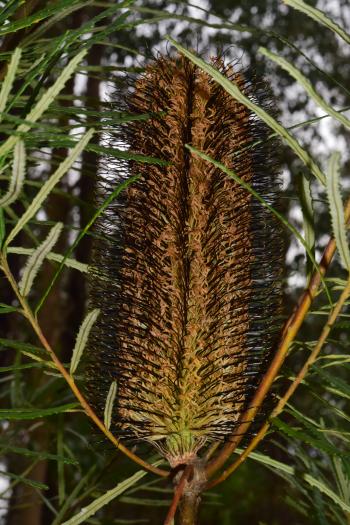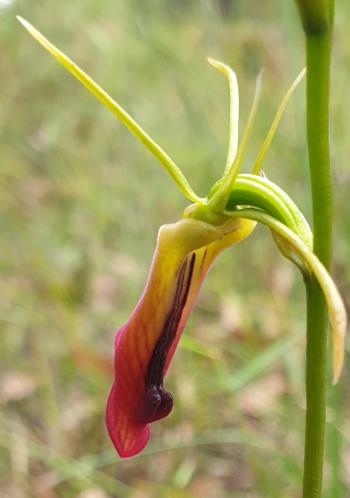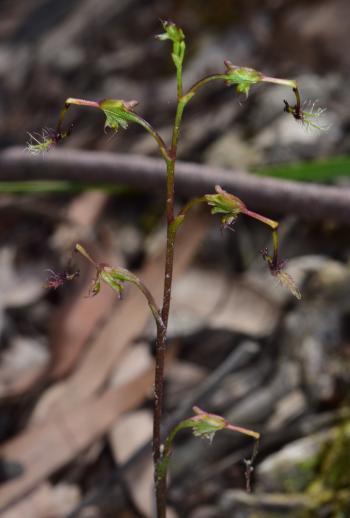Out There with the Natives - The Lyrebird Walk
By Mike Beamish

Hairpin Banksia
Looking for a place to visit over the summer months? Somewhere cool and green on a warm day? Somewhere nearby where you can get back to nature and ignore the hustle and bustle for a few hours? Why not head off to the Lyrebird Walk, a lovely little park accessed from the Strzelecki Highway, a few kilometres north of Mirboo North and straddling the headwaters of the Little Morwell River? Here you will find some picnic tables adjacent to the carpark, with the stream nearby and an information board showing you the options for a couple of walking tracks through the Reserve and the adjacent forests. No toilets though, but it is only a few minutes’ drive to Mirboo North for those who can’t hold on or would kill for their morning coffee.
You don’t even have to leave the picnic ground to get your nature fix. Birds are abundant in these forests, and you are likely to see several species from the driver’s seat of the car – crimson rosellas, superb fairywrens, laughing kookaburras, pied currawongs and magpies like to frequent picnic grounds! To see (or hear) a greater variety though, it is best to take a wander along one of the tracks. If you are not feeling energetic, then just meander along the stream and back. But if you have energy to burn, take one of the longer loop tracks up the hill and you will increase your chances of seeing something a little less common, maybe a golden, olive or rufous whistler, or a king parrot, a gang gang cockatoo, a sacred kingfisher, an eastern whipbird or yes, you guessed it, a superb lyrebird!

Rose Hyacinth
Many critters live in these forests, too – wombats, brushtail and ringtail possums, sugar and greater gliders, koalas, eastern grey kangaroos, swamp wallabies and very rare marsupials such as tiger quolls, bandicoots and antechinus. However you are unlikely to see most of these in daylight hours, as they are mainly nocturnal as well as very shy. Spotlight walks may well be your best chance if you wish to track these down.
Don’t forget the plants! Fern gullies are part of the forest, there are hairpin banksias on the slopes and many species of colourful wildflowers to be found in all seasons. Keen eyes should be able to spot some of the late summer-flowering orchids that grow in this area – the rosy hyacinth orchid (Dipodium roseum) will be the most obvious, with its bright pink flowers on brown or green stems up to a metre tall standing out in the undergrowth. More difficult to find are the two species of tongue orchid (Large Cryptostylis subulata or Small C. leptochila) that can also be quite tall, but will blend into the shrubbery. They both have leaves that look a bit like gum-leaves growing directly out of the ground, so these might be easier to see. Lastly, there is the tiny elbowoOrchid (Thynninorchis huntianus) which doesn’t have leaves and is very cryptic, looking like a small hairy insect dangling from a twig. You might find these scattered in the leaf litter in open areas beside the track. Good luck!

Large Tongue Orchid

Small Tongue Orchid

Elbow Orchid


